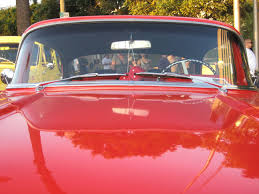Cars in the good old days were little more than motorized carriages, but it didn’t take long for motorists to realize that a little protection against road hazards such as flying gravel, stones and dirt would be a nice addition. 1904 seen the first wave of windshields, which were more or less similar to glass used in house windows, simply a foldable horizontal piece of plate glass. When the upper half of the glass got too dirty to see through, drivers could simply fold it down and keep on driving.
The first car manufacturers to introduce cars with windshields were the Model T by Ford in 1908 and a model by Reo in 1913. The deal breaker however was that these windshields were offered as optional extras that boosted the price by a few hundred dollars. As the roads gradually witnessed a surge in car traffic, the rise in accidents became inevitable. Most windshield related accidents involved shards of glass flying through the windshield or people going head first through the window also dubbed “wearing a glass necklace”. It is also rumoured that Henry Ford and his close friends were involved in an accident where flying glass proved detrimental.
In light of his personal experience, Ford was determined to improve the safety of windshield glass at an affordable price. It is claimed that the idea for laminated windshields was conceived by two European inventors – Briton John C. Wood and Frenchman Edouard Benedictus, and that too accidentally! The story unfolds when one of the two accidently dropped a beaker, which was put back on the shelf in the hopes it was clean. The same beaker was dropped from the shelf in the same way as the first incident but only this time it shattered to pieces, but remarkably these pieces held together.
Reason being that the beaker had traces of dried cellulose nitrate, a transparent plastic liquid, which was later uniformly set between two layers of plate glass to serve as a solution for unsafe windshields. However using cellulose nitrate was a costly affair, but opened up several new possibilities such as the use of gelatine by Benedictus in 1910. Significant improvements in laminated windshields didn’t arrive until 1938, where Carleton Ellis discovered a glass clear synthetic resin that did not discolour over time. Throughout the following years, there were notable improvements made to windshield production than included bullet proof glass nearly an inch thick.
Today, windshields and windshield repair continue to evolve in both sophistication and complexity, where some wrap around the side of the vehicle, while others provide superior visibility and extend all the way up to the roof just beneath the driver. Modern windshields offer up to 95-99% UV protection, and while Nano-technologies is definitely the wave of the future, sensor laden windshields complete with lasers also known as smart glass also come as standard equipment with several models.

